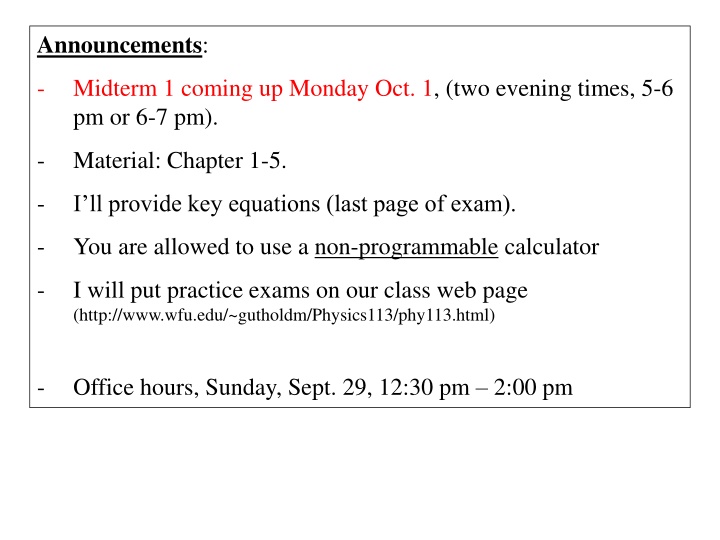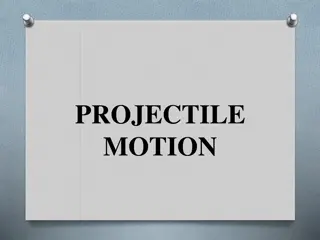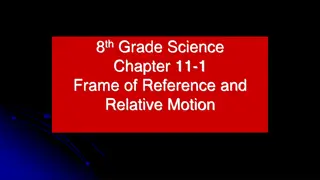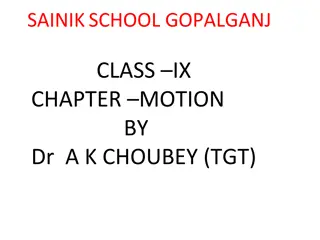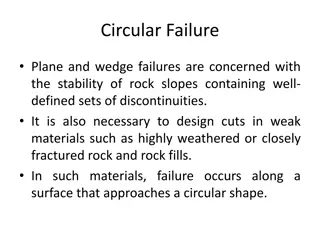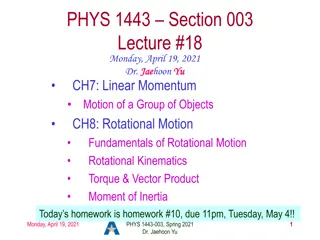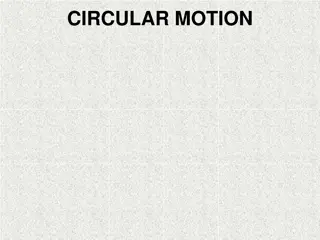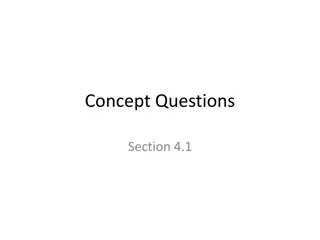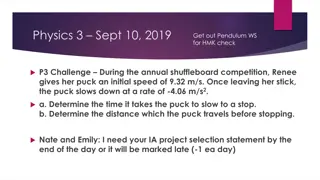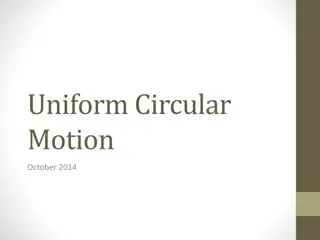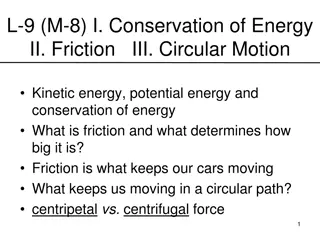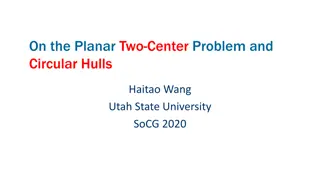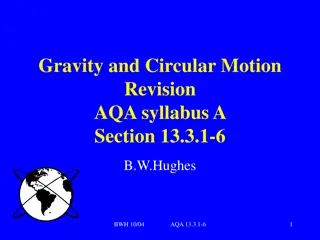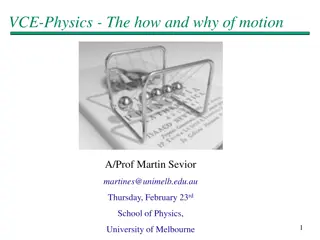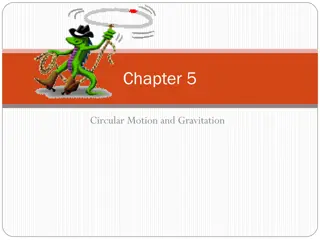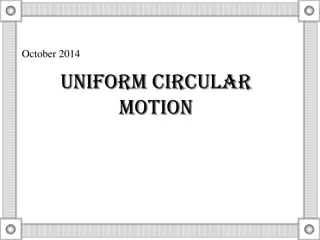Physics Chapter 6: Circular Motion Overview
Learn about circular motion in physics, covering concepts like centripetal acceleration, uniform circular motion, and Newton's laws applied to rotational motion. Get ready for the upcoming midterm with key equations provided and practice exams available on the class web page.
Download Presentation

Please find below an Image/Link to download the presentation.
The content on the website is provided AS IS for your information and personal use only. It may not be sold, licensed, or shared on other websites without obtaining consent from the author.If you encounter any issues during the download, it is possible that the publisher has removed the file from their server.
You are allowed to download the files provided on this website for personal or commercial use, subject to the condition that they are used lawfully. All files are the property of their respective owners.
The content on the website is provided AS IS for your information and personal use only. It may not be sold, licensed, or shared on other websites without obtaining consent from the author.
E N D
Presentation Transcript
Announcements: - Midterm 1 coming up Monday Oct. 1, (two evening times, 5-6 pm or 6-7 pm). - Material: Chapter 1-5. - I ll provide key equations (last page of exam). - You are allowed to use a non-programmable calculator - I will put practice exams on our class web page (http://www.wfu.edu/~gutholdm/Physics113/phy113.html) - Office hours, Sunday, Sept. 29, 12:30 pm 2:00 pm
Chapter 6: Circular Motion Reading assignment: Chapter 4.4, 4.5, 6.1, 6.2 (skip 6.3, 6.4, 6.5) Homework 6 (due Thursday, Oct. 4): Ch. 4: OQ1, OQ5, 33, 38, 40 Ch.6: 1, 6, 8 Remember: Homework 5 is due Friday, Sept. 28) In this chapter we will learn about the forces acting on particles when they move on a circular trajectory.
Quick quiz Name all objects that experience a net acceleration (Hint: For which objects is the velocity changing?) A. Space ship at constant velocity B. A braking car C. Particle going straight at constant speed D. Hammer of a hammer thrower going at constant speed (see picture) E. B & D
Uniform Circular Motion Motion in a circular path at constant speed. Velocity is changing, thus there is an acceleration!! Velocity is tangent to the path of the object Acceleration is perpendicular to velocity Centripetal acceleration is towards the center of the circle 2 v = Magnitude of acceleration is ac r r is radius of circle
Thus far we have applied Newtons law, F = m*a to linear motion. Now we ll apply it to rotational motion
Particle moving with uniform speed v in a circular path with radius r has an acceleration ar: 2 v = ar r (Derivation: see Chapter 4.4) - The acceleration points towards the center of the circle! - Centripetal acceleration
Newtons law along the radial direction (along r): 2 v = m a = F m c r r Left hand side: forces Right hand side: m*acceleration
Uniform Circular motion: The velocity of the particle is along the __________ The centripetal acceleration is towards the __________ The centripetal force acting on the particle is towards the ________ Centripetal force causes a change in the ________________ but no change in ________________. The magnitude of the centripetal acceleration is: a =______________ Newton s law: The force on the particle is (centripetal force) F= m a = ______________
i-clicker: A particle is moving in a circular path. If the force on the particle would suddenly vanish (string cut) in which direction would the ball fly off?
Black board example 6.1 Jeff Gordon leads his race and must drive into a curve at top speed to win it all. The radius of the curve is 1000.0 m and the coefficient of static friction between his tires and the pavement is 0.500. Find the maximum speed he can have and still make the turn.
Non-uniform circular motion, tangential and radial acceleration Now: consider a particle moving on a circular path with changing speed (speeding up or slowing down). Total acceleration has a tangential and radial component: Tangential component causes a change in speed Radial component causes a change in the direction of the velocity = + a a a r t d v = a t dt 2 v = a r r
Non-uniform circular motion, tangential and radial acceleration Previous slide: acceleration has a radial and tangential component Force has a corresponding radial and tangential component. The bead speeds up with constant tangential acceleration, as it moves right. Draw the vectors representing the force on the bead at points A, B, C.
